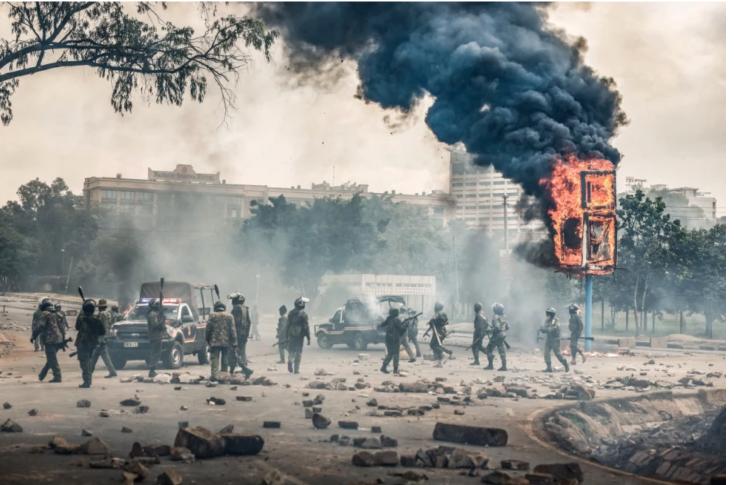#SiriNiNumbers: The online whisper that became a nationwide protest

With nothing more than smartphones and their voices, young people turned social media into a full-scale mobilisation tool. What began with digital posters and cryptic calls to action in group chats rapidly built momentum.
It started as a whisper in the timelines—a hashtag, a meme, a thread—shared and reshared by a generation that knows how to turn screens into street power.
By dawn on June 25, the whisper had swelled into a storm as Gen Z flooded Kenya’s cities, transforming the digital rallying cry #SiriNiNumbers into a movement that could no longer be ignored.
With nothing more than smartphones and their voices, young people turned social media into a full-scale mobilisation tool. What began with digital posters and cryptic calls to action in group chats rapidly built momentum.
By Tuesday, every tweet, retweet, and repost was pulsing with urgency.
“Together we are one, tusichoke #SiriNiNumbers,” read one post—one of thousands that ignited a national response.
By early Wednesday morning, crowds were already filling the streets of Nairobi. From scattered chants to tightly packed marches, the transformation was swift and deliberate.
Gen Z was not just protesting—they were reclaiming space, memory, and voice in honour of the victims of the 2024 anti-Finance Bill protests.
As security forces moved in with tear gas and barricades, the response from the streets was bold.
Protesters stood their ground, dressed in black, banging signs and chanting “Reject Finance Bill!” as clouds of white smoke spread across the capital.
“They want us to fear, but we are not afraid,” one protester shouted near Parliament, as others joined in with defiance.
Despite security blockades, demonstrators pushed past barriers along State House Road, a restricted zone rarely breached. The crowd, which had gathered at Uhuru Park earlier, surged forward in one of the day’s most powerful moments—echoing last year’s breach of Parliament during similar protests.
Police attempted to contain the situation with water cannons and tear gas, but the mass mobilisation proved too overwhelming. Running battles erupted in various parts of Nairobi as protesters clashed with officers, while others lit fires, blocked roads, and sang protest songs.
Even as roads were sealed and public transport halted, the crowds grew
. Commuters were forced to walk into town, navigating around barricades. Private vehicles underwent heavy security checks, underscoring the state’s anxiety about what was unfolding.
“We have been told that the town is out of bounds for public vehicles, so we have to walk to work,” said one commuter in Westlands.
By late evening, thousands were still marching, chanting, and holding up placards—fueled by a digital campaign that began with a single idea: that power lies in numbers.
And as the streets filled with smoke, chants, and courage, Gen Z proved just how powerful those numbers can be.
